#history of life
Explore tagged Tumblr posts
Note
i don't think we mention how fucking horrifying that extinction was in popular media enough. like funny asteroid go brrrrr but that's really fucking sad to me. they were here for hundreds of millions of years and just got fucking obliterated by a big enough rock.
like it was ONE DAY
ONE
most mass extinctions take millions of years
but the world literally went from
"look at this lovely biosphere, all these wonderful animals and plants and fungi and microbes, look at them doing their thing"
(Prehistoric Planet)
and then
BOOM
everything over 25 kg? dead
Anything under? Better hide from the
GLOBAL WILDFIRES
TSUNAMIS
SHOCK WAVES
and IMPACT WINTER
and hope you can find food for the next few millennia while the SUN IS BLOTTED OUT
this is *trauma*. the BIGGEST TRAUMA our biosphere has possibly EVER HAD
(there's one impact event that was bigger, 2billion years ago, but this was before life really became complex - so who knows how that affected the life at the time)
ONE DAY
change isn't supposed to fucking happen that fast
never mind such DEVASTATING change
and like, the Jurassic + Cretaceous is the longest period of relatively stable terrestrial environments on earth. The Paleozoic through the Triassic is just a lot of awkwardness, complex life stretching its metaphorical legs and figuring things out
but the J+C was a fairly stable series of succeeding ecosystems with gradual change and a few minor mass extinctions that they got through
like,,,,,,,,,,,,,,,,,,,,
WHAT
896 notes
·
View notes
Text

This note in the rulebook of the origin of life-themed boardgame Bios: Genesis makes an interesting point about oceans being more a sink than a source of living lineages, but I'm not so convinced.
For one, there are several instances of life settling land independently (off the top of my head: vascular plants, probably multiple lines of fungi and slime molds, land flatworms, earthworms, multiple lines of slugs & snails, multiple lines of crabs, pillbugs, at least three lines of arachnids, millipedes, insects, and tetrapod vertebrates; with several more partially-terrestrial lineages such as horseshoe crabs and mudskippers).
Second, terrestrialization didn't happen all at once in the Cambrian but in multiple waves from Ordovician to Devonian, with arthropods moving on land in the Cambrian and fungi and bacteria probably there from much longer before. Earthworms only became terrestrial in the late Paleozoic at earliest, and many lines of slugs as late as the Cenozoic. Of course later waves have less chances of displacing the older.
If reversions to the sea are more common that colonizations of land, I think it's more likely than moving from sea to land requires many specific pre-adaptations that most aquatic lifeforms lack (look how many of the lineages above are arthropods), whereas terrestrial organisms already have all they need to live in water.
It is true that many terrestrial lineages, including our own as well as plants, earthworms, and several lines of slugs, reached land through freshwater rather than directly from the sea (unlike most arthropods).
(Looking this up, I also found an answer to another intriguing question made by the writer of Bios: why did insects never become secondarily marine, despite (a) accounting for the great majority of non-parasitic species on land, (b) having colonized freshwater countless times, and (c) vertebrates successfully returning to the sea dozens of times? Well, for one it seems that hundreds of species did, although it's not clear to me whether they live in seawater rather than at its margins. The paper proposes that the great advantages of insects compared to other small invertebrates are their specializations for flight and long-distance communications, which are much less useful in the open sea compared to land and freshwater bodies, making insects much less competitive than other marine arthropods.)
7 notes
·
View notes
Note
This hit me RIGHT in the feels
Where did the whopping huge meteor come down? I assume if there are core samples, we know where it was, and maybe there are remnants of it?
Chicxulub Puerto, Yucatan, Mexico, fucking exactly

#always a paleontology adventure#always a quote adventure#always an art adventure#paleoart#mass extinction#yucatán#chicxulub#Extinction#History of life#natural history#this hit me like a truck#right in the feels
56K notes
·
View notes
Text



Potamon sp. Crab Fossil; Pleistocene Epoch (2.58 - 0.012 MYA)
#fossil#fossils#crab fossil#prehistoric#collectible fossil#fossil collection#sea fossil#marine biology#marine fossil#special collections#collectibles#crystals#geology#rocks and minerals#stone aesthetic#paleontology#naturalhistory#evolutionarybiology#natural#natural history#natural life#marine animals#gemstones#sea creatures#sea life#marine life#sea animals
16K notes
·
View notes
Text
Do you know this queer character?

Castiel is Queer and Agender or Genderfluid, and uses varying pronouns based on presentation!
#opening pandora's box with this one i've been blissfully unaware of supernatural my entire life and I don't really want to start but#the history of supernatural on this blog already is rough please have mercy#this is the most specific i'm willing to get with labels on this one#8 people submitted him dear lord#castiel#cas spn#castiel spn#spn#supernatural#tumblr polls#fandom polls#poll#queer#agender#genderfluid#varying pronouns#he/him#she/her#they/them#live action#lgbtqia#do you know this queer character
31K notes
·
View notes
Text
In 1850, a farmer found a secret village. It was later determined to be older than the Great Pyramids of Egypt. Archeologists estimated that 100 people lived in this village named Skara Brae, the "Scottish Pompeii." The houses were connected to each other by tunnels, and each house could be closed off with a stone door.

19K notes
·
View notes
Text
About twenty years back, there was this weird transitional period after companies had figured out that harvesting their users' demographic information was a potential gold mine but before we lived in a hellish panopticon where any website operator could look up your IP address and know what you had for breakfast where some sites would try to get you to fill out, like, detailed demographic surveys before they'd let you access their stuff. Not just age, gender and geographic location, either – some of them would fish for employment status, marital status, brand preferences, even religious affiliation. A lot of folks I knew would just pick the first option in every dropdown, but my move was always to fill in the demographic information of the current Pope, at least as far as I was able to determine it (brand preference was always a tricky one). I like to think that, thanks to my efforts, their data sets are haunted to this day by a phantom pontiff.
#life#computers#internet#history#nostalgia#capitalism#food mention#religion mention#christianity mention#catholicism mention#hovering my mouse over the checkbox in an agony of indecision as i internally debate whether the pope knows what pringles are
8K notes
·
View notes
Text

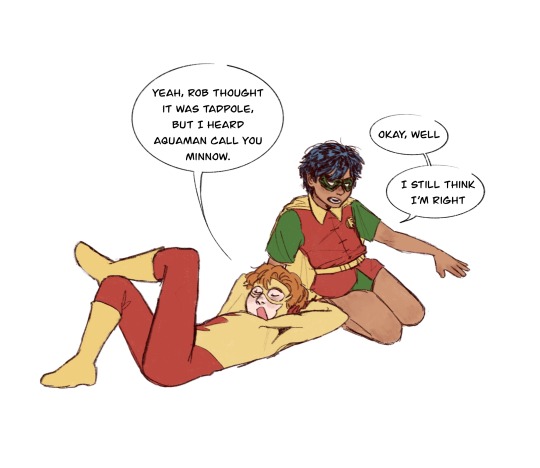
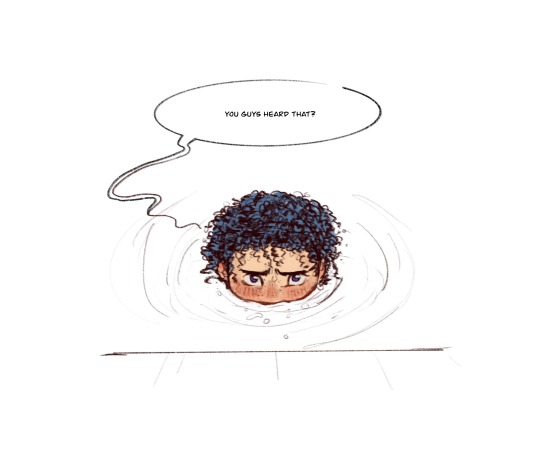
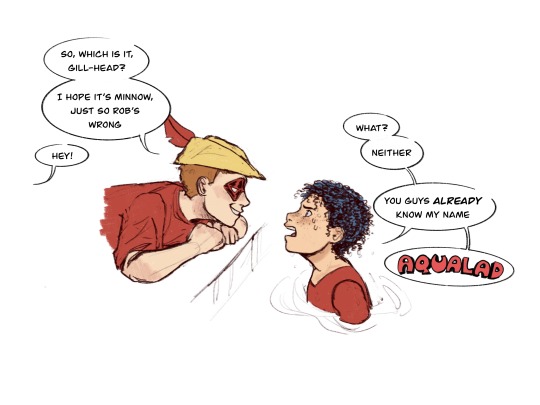
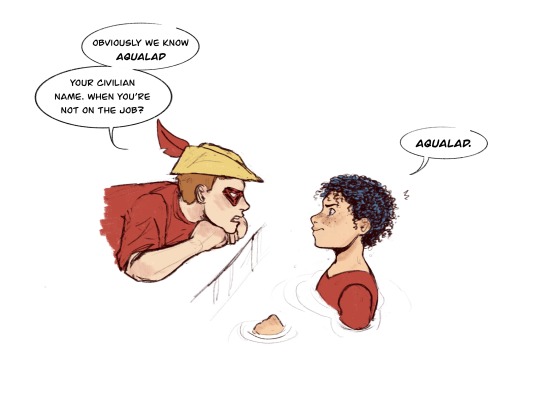
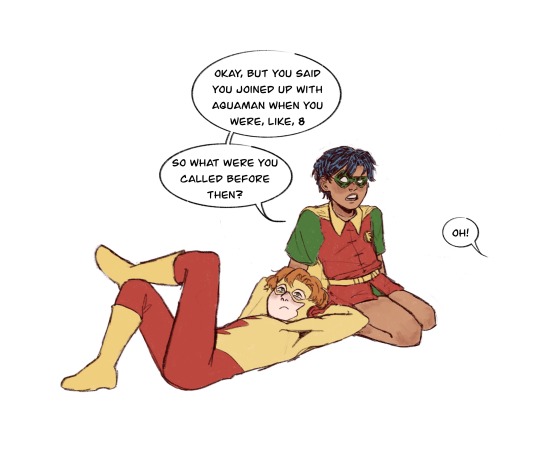
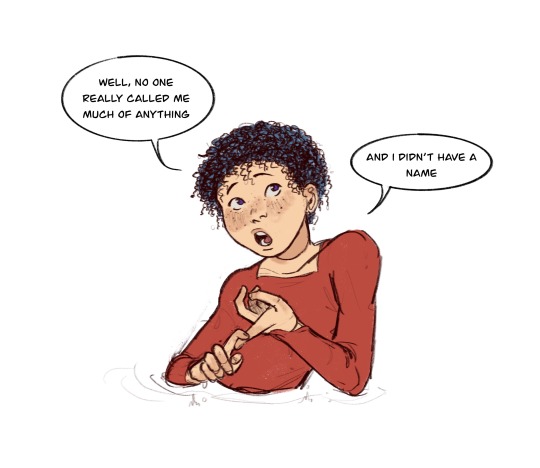
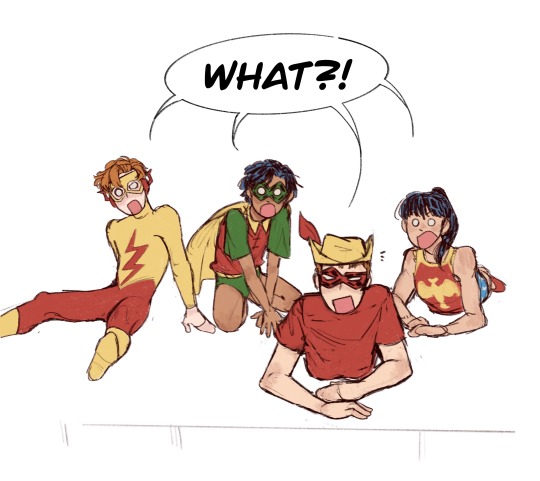
identity reveals are always fun
#batcave search history that night: friend has no name. atlantis naming conventions. atlantian names. r there birth certificates in atlantis#theyre so fun to draw guys im sick with it#also: everyone thinking 'But his name is Garth'#I know that and YOU know that but he doesn't until like..... a few years later. canonically#Unnamed Youth 'Aqualad' No Last Name#and arthur does call him both minnow and tadpole so wally n dick r both right in their own ways#and for ppl who really dont know. garth was abandoned as an infant and didnt hang w anyone until arthur took him in lol. what a life#and arthur girl...... was aqualad the best and only u could do#teen titans#fab five#donna troy#wally west#dick grayson#garth of shayeris#roy harper#dc#dc comics#my art#everyone hangin by the salt water pool so garth can hang w them :]
14K notes
·
View notes
Text
THIS IS *LITERALLY* WHAT I HAVE BEEN SAYING
115 notes
·
View notes
Text

love will truly live
#where are my book of life truthers. where are u. thats my book 7 ending. ik ill be happy no matter how it ends but that feels right imo#big scary dragon enemy of mankind etc etc and silver just wants to save him. to wipe away the loneliness and fear#to extend kindness when the world wants him taken down (and not without cause. um. the world IS at stake)#like i think the horn disfigurement would be cool in a despairing kind of way but i want silver to break history's loop. to connect#i literally want a fucking 'the power of love' ending ITS CHEESY BUT THATS MY IDEAL OKAY. IM THE CHEESEMAN#im actually the drama girl so the horn axeing is more my typical brand but ugh. this. i ammmm sorry toro i am sorry going in a playlist#twstファンアート#twst#twisted wonderland#twst silver#malleus draconia#suntails#i wake up at 6am now Naturally bc of work and snoozed till 7 and the new ssr was the first thing i saw and i got nauseous#silver fans always win. write this down im so serious. we literally have never lost Ever. this. might be my fav art in the game#def passes silver's lab card for best silver card art direction but genuinely overall it fucks so severely
4K notes
·
View notes
Text
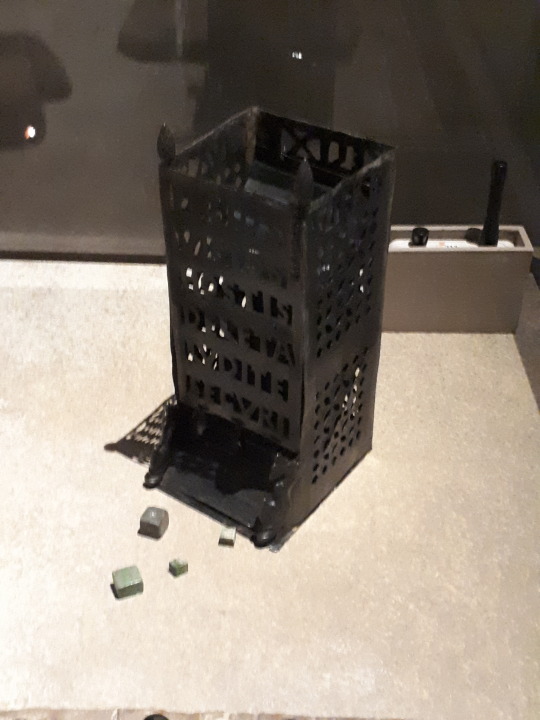
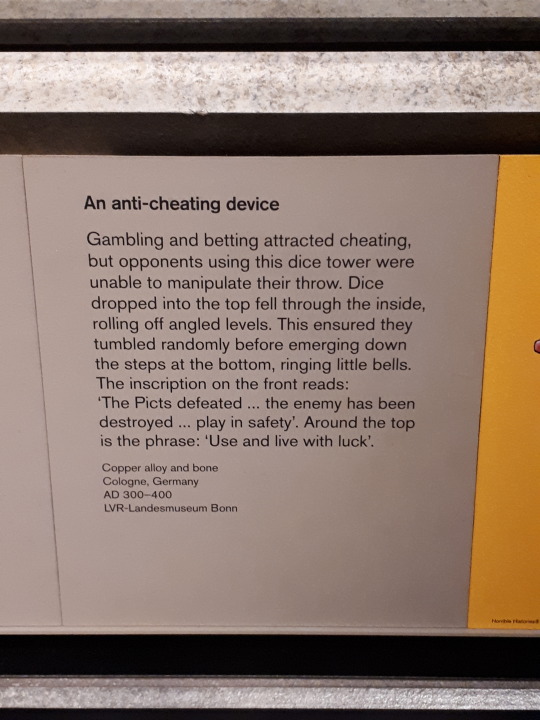
BEST THING IN THE EXHIBIT
15K notes
·
View notes
Text

Peek-a-boo! Have you ever seen the granulate shellback crab (Hypoconcha arcuata)? Growing about 0.6 in (1.4 cm) long, this unusual-looking crustacean inhabits coastlines along parts of the western Atlantic, with a range that includes parts of the United States, Mexico, and Brazil. Unlike hermit crabs—which hide inside their chosen shells—this critter uses its posterior legs to secure shells onto its back, often shouldering pieces larger than its own body, as a defense against foes.
Photo: Austin Smith, CC BY 4.0, iNaturalist
#science#nature#natural history#animals#fact of the day#did you know#cool animals#marine biology#marine biodiversity#crabs#crustacean#fun facts#animal facts#ocean life
5K notes
·
View notes
Text
I don't like wading into Ao3 debates, but I want to give my professional opinion on Ao3 with regard to archives vs. libraries.
I am a professional librarian (MSLS) and I have worked in both archives and public libraries and a lot of the confusion and concern I see surrounding Ao3 is a fundamental misunderstanding of How Archives Work.
An archive is a collection related to a subject. That subject is often a person but sometimes a field or concept or project. And the purpose of an archive is to keep everything. And I mean everything. I was going to say "short of biohazards" but since I know there's a sealed R. Crumb Devil Gal chocolate bar in the UNC Chapel Hill archives, we really do mean everything.
When a collection of materials--which are usually unique and original and can be photos, manuscripts, letters, recordings (audio and/or visual), notes and notebooks, objects, published books, whatever--on and/or from the subject arrive at the archive, they are examined, preserved for longevity, accessioned and cataloged (added to the archive's records), and added to the archive. You measure collections in linear feet. As in, once it's all preserved and boxed and secure, you note how many feet of shelf space it takes up. And some of y'all on Ao3 have a lot of linear feet to your name (and I'm proud of you).
This is an archive: it is designed to preserve the original materials related to a subject. That is its purpose. Archives are how we have the original scroll manuscript of On the Road, for example, or the Lomax recordings of American folksongs, or Tijuana Bibles, or James Joyce's loveletters to Nora.
Now you, a member of the public, can access some archives. Some are easier to access than others. The one I worked in was open to the public; good luck getting into the British Archives without a good reason.
So now apply this to Ao3--which is an archive both in name and in purpose. It is intended to preserve fan-created content long term. And this means everything, whether you personally like the materials or not. It is a repository for as much as possible.
And the "whether you personally like the materials or not" is important, hence why I mentioned Jim's loveletters and Tijuana Bibles in particular. (RIP Jim, you would have loved pegging.)
If it's made by fans and it exists, we should keep it to document the history and progression of fandom. That is the point. We have lost enough materials related to the subject of fans of media and we don't need to lose any more.
The fact of the matter is that Ao3 is only one facet of the OTW, which preserves other fan-related materials (convention booklets and zines, for example). Somehow Ao3, an archive on the subject of fanfiction, has been divorced from the rest of the project, mostly by way of "purity culture" and panic over "dangerous" fiction.
The fact that you can go through an archive and find interesting information is the other side of archives. No, they shouldn't be like the banker's box of old letters stuffed in my closet. Yes, they should be organized and as accessible as is appropriate for the state of the materials.
It's really, really cool to find stuff in an archive, I'm not even going to lie. I have done it before and I will do it again. And yet there are other items in an archive that I might not want or need or be interested in at all--but they're still there. That's the cataloging and accessioning: to keep up with what's there, to stay "on topic" with collecting, and to be able to find things in that archive. Bless the tag wranglers who are doing the cataloging at Ao3.
The pearl clutching seems to come from 1. the creation of "dangerous" fanworks and 2. public access to those "dangerous" fanworks. These are issues of "purity culture" and opinions on censorship and should not involve Ao3.
Ao3, under the umbrella of the OTW, is a documentation and preservation project first and foremost.
12K notes
·
View notes
Text








Happy Black History Month
Black Jazz Musicians
Their names are presented below, in chronological order from top to bottom
Louis Armstrong 1901-1971
Ella Fitzgerald 1917-1996
Duke Ellington 1899-1974
Miles Davis 1926-1991
Billie Holiday 1915-1959
Count Baise 1904-1984
Sarah Vaughn 1924-1990
Nancy Wilson 1937-2018
#black girl aesthetic#black girl blogger#black girls of tumblr#pinterest#black girl joy#black girl magic#soft life#black girl beauty#luxury#soft girl era#happy black history#black history month#black people are the blueprint#sarah vaughan#count basie#billie holiday#louis armstrong#ella fitzgerald#nancy wilson#black men#black excellence#jazz music#jazz musician#jazz#duke ellington#miles davis#black and proud#black is beautiful#rooting for black people#black history
3K notes
·
View notes
